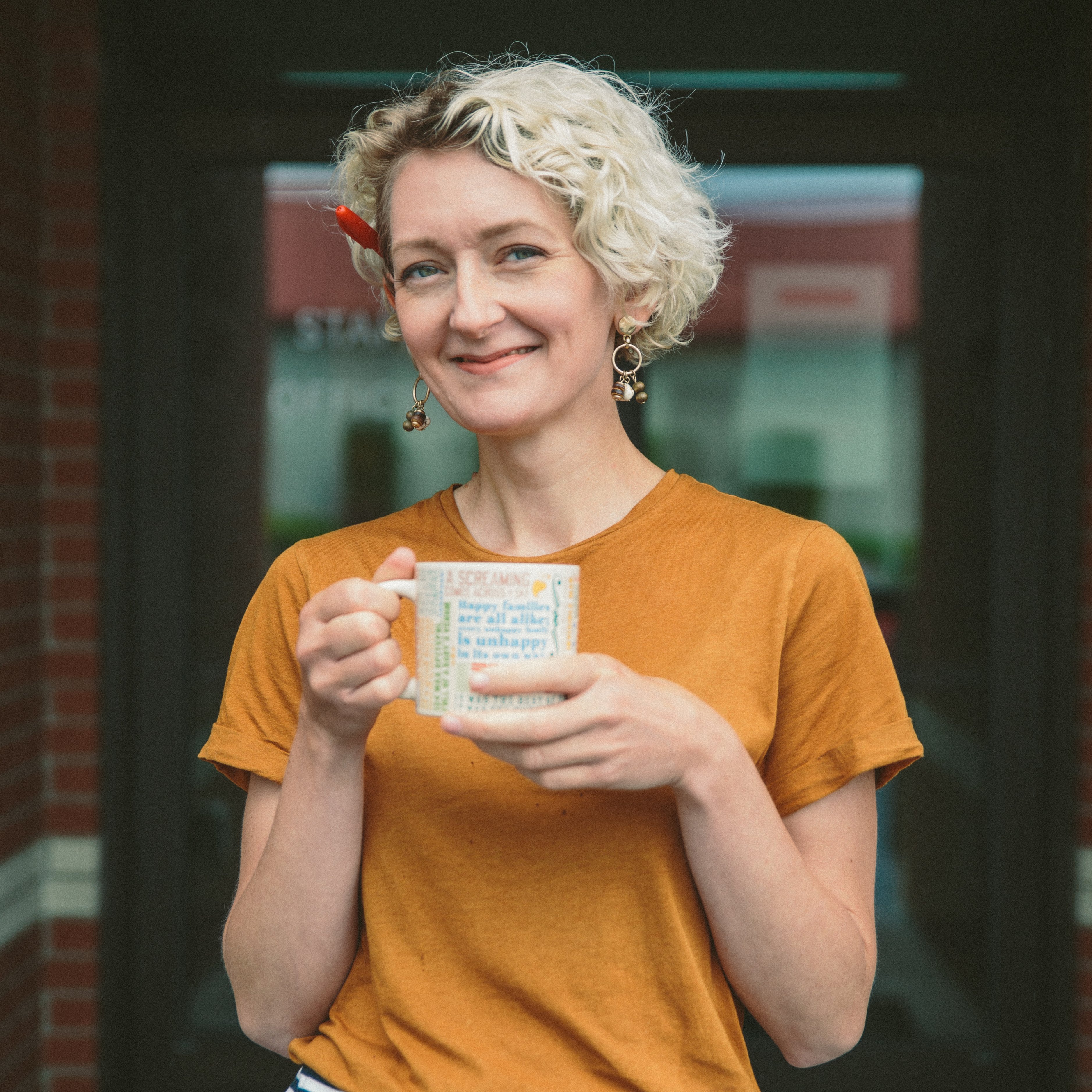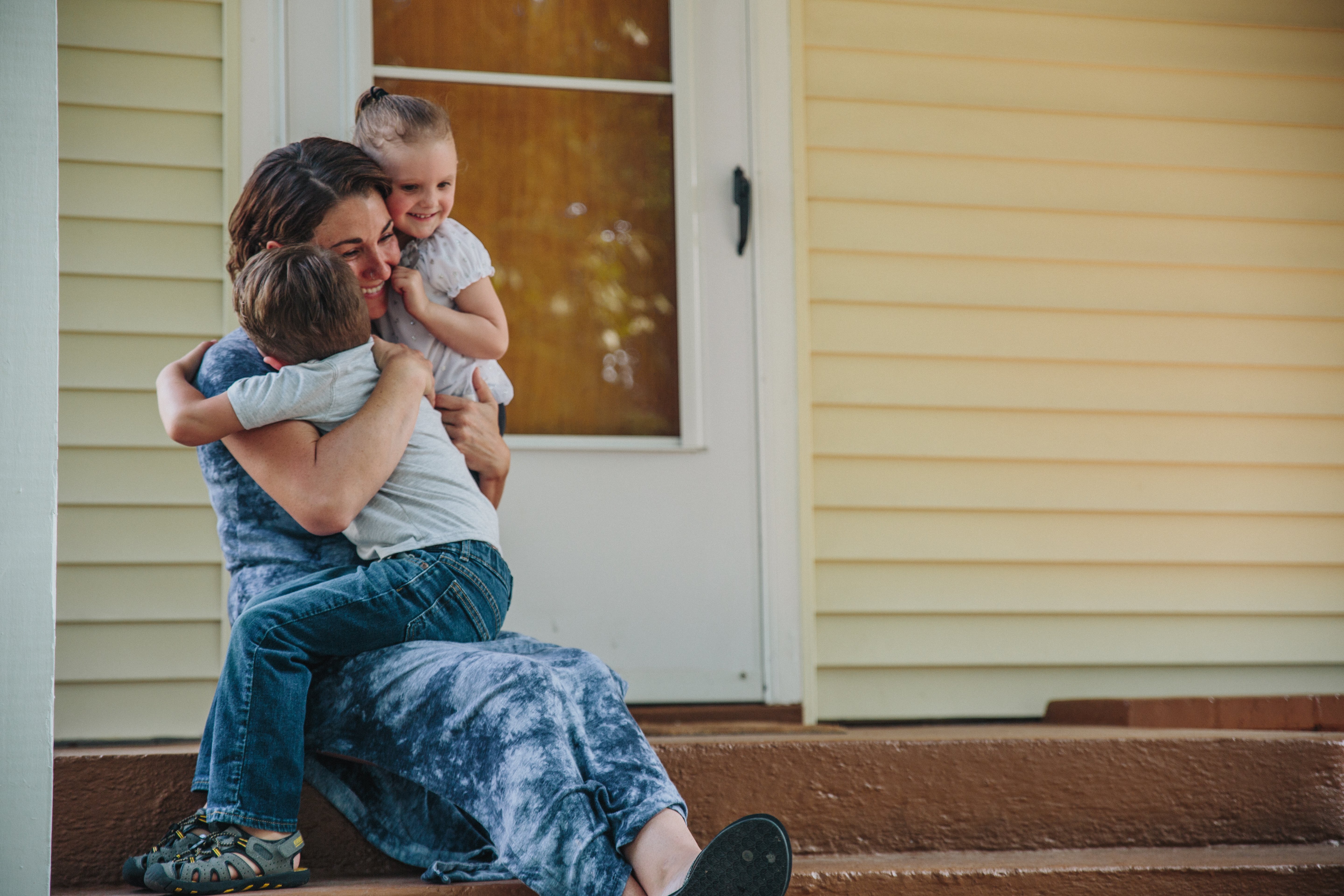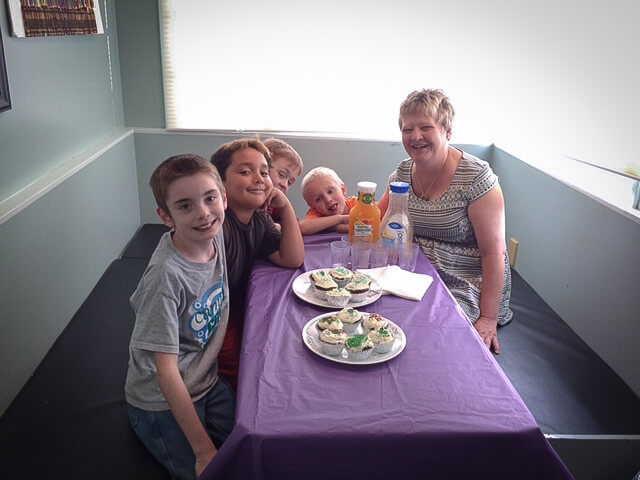2 min read
The Hope of Christmas
“May the God of hope fill you with all joy and peace as you trust in him, so that you may overflow with hope by the power of the Holy Spirit.” —...
6 min read
 Genevieve Gromlich, former Content and Communications Manager
:
October 19, 2022
Genevieve Gromlich, former Content and Communications Manager
:
October 19, 2022
“When you can connect to the heart of a child, everything is possible.” - Dr. Karyn Purvis, co-creator of Trust-Based Relational Intervention®
Family breakdown. Generational cycles of abuse. Child neglect. These three concepts in eight words should stop us in our tracks. Childhood trauma is not just a contributing factor in modern day homelessness; it is part of a systemic issue that interweaves much of today's culture. Broken families produce damaged children whose unmet needs turn into poor lifestyle choices which perpetuate the cycle of brokenness.
My heart grieves as I write this for UGM. Focusing on the suffering of children is the last thing we naturally want to do. I know how easy it is to get caught up in a sense of powerlessness or to try to protect ourselves by just turning away, but my challenge to you is to start seeing ministry to children as one of the most effective strategies for combatting the crisis we see on our streets. There is so much that we can do, and even small gestures can make giant differences in the lives of little ones.
To learn more about the specific needs of the underserved children in our region and what the UGM Children's Program is doing to help, I connected with Jana Ross, Lead LIFE Recovery Counselor and TBRI Practitioner, and Children’s Program Coordinator Robin Olson at the UGM Center for Women and Children in Coeur d’Alene. They introduced me to the teaching implemented in our Children’s Programs called Trust-Based Relational Intervention.
Genevieve: What is TBRI and who is it for?
Jana Ross, Lead LIFE Recovery Counselor and TBRI Practitioner: Trust-Based Relational Intervention (TBRI) focuses on repairing broken attachments through connection, empowerment, and correction. It was first created for use by foster families. The children we serve (we call them children from hard places—whether that’s from a home with prolific drug use, instability, or homelessness—) almost across the board, they have a breach in their attachment.

An attachment breach sounds serious. What are the implications?
Robin Olson, Children's Program Coordinator: When it comes to science, our brain was developed in the first couple years of life. As infants, we are asking, “Can I trust you, are you there for me?” The child cries, the parent responds, the child cries, the parent responds, and in that develops a sense of trust: "Adults are there for me. I have a voice and I matter." But without that, you create a variety of issues. However that happens—mom has an addiction, a parent is chronically sick, child is hospitalized, something has taken place where that isn’t being met—that creates an insecure attachment. Insecure attachments can be anxious and avoidant or chaotic (the very person who loves me turns on me.) That’s really the premise behind trauma-informed, attachment-based teaching.
Jana: What happens is children from hard places learn a variety of ways to get their needs met—manipulation, freezing someone out, demanding, stealing. We may want to jump into disciplining this behavior, but without connection, you really can’t teach the other two pieces which are empowerment and correction. But once they have the sense that “Somebody is there for me, I matter,” you can negotiate those needs differently. The four goals of TBRI are for the children to be able to give nurture, receive nurture, know that they’re important, and they can negotiate their needs appropriately. The heartbeat of TBRI is connection.

Is an insecure attachment style a life sentence or can it be repaired?
Robin: In the first five years of life, our primary attachments are formed, and in the following ten years, from 5 to 15 years of age, our neuro connectors are still malleable, so to speak, and if there are opportunities to restore broken attachments or connect in a healthy way to someone who is trustworthy during that time frame, our early attachment style can potentially be altered. Even in our adult years, with a lot of work and a lot of patience from those who love us, we can relearn how to relate to ourselves and others. Generally, it gets a lot harder though, especially after those mid teen years.
How do you facilitate this relearning and are you seeing results?
Robin: Warm eyes, soft tone, everything that says you matter, you’re safe in my presence. Not long ago, I had these two kids, they were playing with hand tools and arguing about who’s toy was who’s. My stance was a TBRI concept of getting down on their level, looking them eye to eye—my body posture is open and accepting. This says, "I’m going to connect with you, and let’s talk about what’s going on." And help them both feel valued and get to the needs that both of them have. Even before this, we’ve already taught them things about regulating, knowing their own emotions, giving them words for those feelings.
 Jana: If you can imagine, these kiddos have been in a hot place for five, six years and it’s been chaotic all this time; how receptive are they going to be the first time she does that? It takes time.
Jana: If you can imagine, these kiddos have been in a hot place for five, six years and it’s been chaotic all this time; how receptive are they going to be the first time she does that? It takes time.
Robin: They say that play is to children as counseling is to adults. Children learn through play. A lot of what we have in here is play but it’s also what TBRI calls nurture group where you practice the skills of TBRI. And for adults, it’s not that different. In our First Steps program for the women, Kirstie reads children’s books to the ladies, so they can start learning how to respond. Then we ask, “Do you see yourselves in this? What kinds of thoughts or emotions come up?” It isn’t about play at that point, but it is similar to our children’s program because we’re intentionally creating this safe place for simple connections where trust can be built—often for the very first time.
I’ll give you a picture of the women we work with: you know we all have an “emotional brain” and a “cognitive brain.” Ideally, we want our “brains” to work together. When most of our residents come in, those two are disconnected—like their brain is either saying, “Don’t feel, don’t think, don’t act that way”—they’re very cognitive, not connected to their emotions at all—or we see the other thing, and everything’s about emotions: “This is who I am, and you’re just going to have to accept it.” So the whole idea is about having them work together. “I’m aware of my emotions, they’re informing my decisions.” We’re inviting them into that pause, that space. We want to give them lots of opportunities to learn to respond with both their thoughts and their feelings.
And for moms who are trying to rebuild connections with their children, they need to create opportunities to say, "I hear your voice, I see you, I want to meet your needs." We had one mom recently who had often expressed that she didn’t like her daughter and was frustrated with her. First, she went through our parenting classes, but then she met individually with an intern who did TBRI with her and the child. She did these activities, acting them out, etc. The mom worked really hard, lots of engagement and so on… Lately, she has been way more relaxed. There’s respect and value between both of them.

You said TBRI involves connection, empowerment, and correction. What do empowerment and correction look like in the program?
Jana: Empowerment is giving power back so they want to cooperate. And for correction, we always want it to be an I.D.E.A.L. response: immediate, direct, action-based, and leveled at the behavior. Instead of “I don’t like you,” it’s, “Let’s try that again: you can tell me you don’t like something, but let’s do it with respect.” All that is about practicing. Redos. We’ll do a skit with stuffed toys or characters: “I’m going to tell you how to do something, and you practice doing it wrong, and then how could you do that differently?” They’re using their own words and their thinking skills to come up with something, so it’s experiential for them.
Beyond this key teaching, what would you say is the heartbeat of UGM’s Children’s Program?
Robin: When we opened the Center, my hope was that in Robin’s Nest we would nurture, and in Eagle's Nest, we would teach them to fly; that they would get the skills needed to go out and be able to do life and do it well. For years, I’ve said my hope and desire is that the kids would come back to visit me not as a client but just to visit. And that has started to happen. It makes me so thankful. I think, outside of that, I have a dream/a prayer, that we would start to see our court systems using the same or similar teaching with these CPS cases.
Jana: If you keep the children in these homes without giving them these skills, you’re just causing more trauma. In everything we do, we’re keeping the children’s safety and wellbeing in mind. Reuniting with parents is a huge priority, but we’re going to insist that if you’re in our program and you want to be the mom your child needs, you’re going to have to do the work to repair these broken attachments in yourself and in your child. What I love is that all the staff is on the same page, and there’s practice and affirmation for the moms in every department, even our administrative team can speak the TBRI “language.”
As we seek to provide healing for families at UGM Shelters, we must carefully balance the Lord’s demand for justice and His perfect mercy. From this desire, UGM’s Children’s Programs have developed into robust recovery centers focused on safety, reconciliation, and repairing broken attachments. By God’s grace, we are in a place to both protect children and establish new patterns of behavior, paving the way for whole families to put an end to chronic cycles of abuse.
Small ways you can make a big difference in the life of a child: sponsor a child to come to UGM Camp next summer, volunteer in our children’s department, invest in your neighborhood by connecting with families who may be struggling, and choose to support organizations providing holistic care and recovery for families.

2 min read
“May the God of hope fill you with all joy and peace as you trust in him, so that you may overflow with hope by the power of the Holy Spirit.” —...

3 min read
Here at UGM, we are so blessed to have such incredible, generous partners, like our friends at Hansen’s Green Bluff Orchard! Having a heart for those...

2 min read
At Union Gospel Mission, healing often begins with looking back. As part of our Life Recovery Program, participants are invited to reflect on their...

Volunteer Michaelyn Hodges has a heart for sharing Jesus with the children coming to UGM. She recently answered some of our questions and...

When a mom arrives at UGM with children in tow, we know her needs are going to be complex. She needs to know the little ones will be safe, she needs...

A couple months ago, a staff member at the Crisis Shelter wrote a blog on what it’s like living at a homeless shelter as a kid. In response to that...